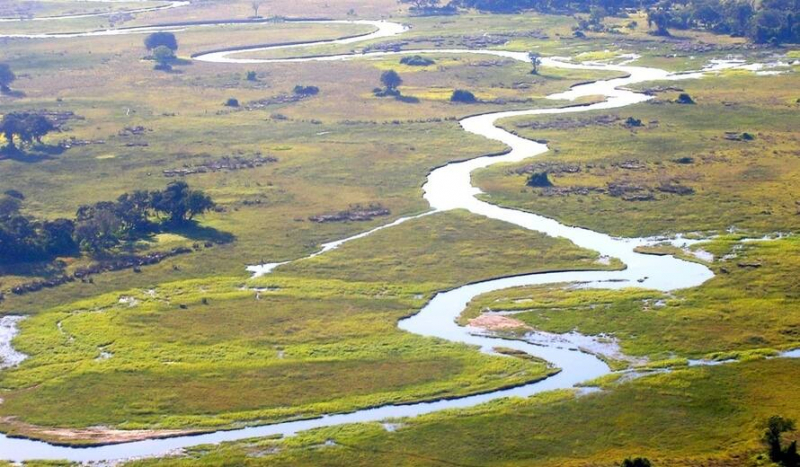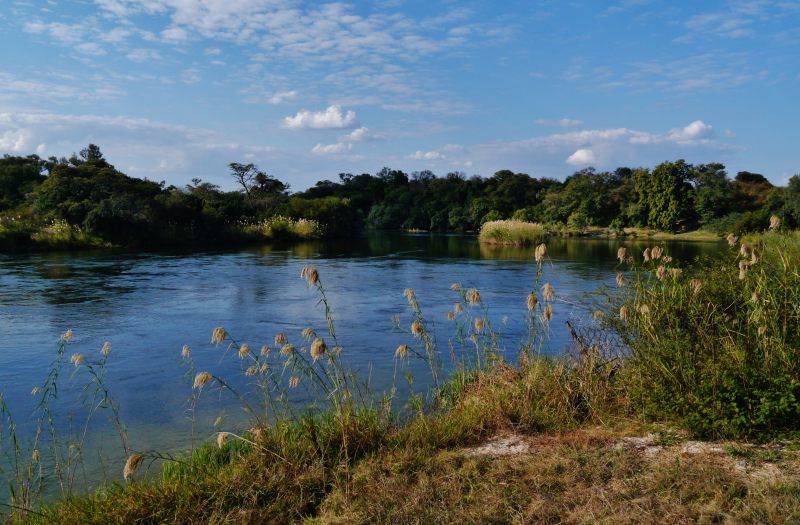Okavango River

The Okavango River (also known as the Okovango or Okovanggo River) is a river in southwest Africa and is one of the Longest rivers in Namibia. It is the fourth-longest river system in southern Africa, stretching 1,600 kilometers southeastward (1,000 mi). It originates at an elevation of 1,300 meters (4,300 feet) in Angola's sandy highlands, where it is known as Rio Cubango in Portuguese. It comes into Botswana from farther south, where it forms part of the boundary between Angola and Namibia. The Okavango Delta lacks an exit to the sea. Instead, it empties into the Okavango Delta or Okavango Alluvial Fan, a Kalahari Desert endorheic basin.
Drought is affecting both Namibia and Botswana, raising fears about potential confrontation over river water use. Namibia has constructed a 300-kilometer-long water canal and proposed a 250-kilometer-long pipeline to move water from the river into Namibia to assist alleviate the drought. Botswana, on the other hand, exploits the Okavango Delta for both tourists and water. Botswana's Department of Water Affairs has stated that 97 percent of the water in the river is lost due to evaporation, hence the government cannot afford to lose any further water.
Namibia, on its part, claims that it would only divert half of the river's flow and that it is entitled to any water that passes through its borders. To address such difficulties, Angola, Namibia, and Botswana signed an agreement in September 1994 to establish the Permanent Okavango River Basin Water Commission, which will advise the three nations on the best methods to share the Okavango River's resources.
Length: 1,700 km






